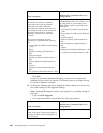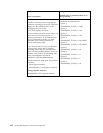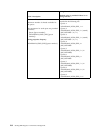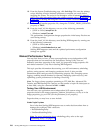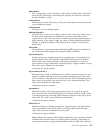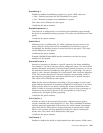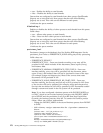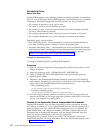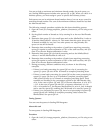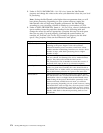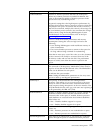queues to back up and degrade performance. A good place to start is 4 times
the number of your CPUs. Interactive use tends to favor more threads, while
batch or document processing tends to favor fewer threads.
CacheThreshold.#
Number of business processes that must be in the queue before any business
process is cached. In addition, this value is the minimum number of business
processes in the queue before any rescheduling occurs. This value can be
different for each queue.
.# indicates the queue number.
In general, setting this value high improves performance by keeping more
business process contexts in memory when they are placed in the queue. To
estimate the amount of memory that will be consumed, multiply this value by
the average size of your business process contexts. You can obtain the average
context size using the Sterling B2B Integrator System Troubleshooter. For more
information about reviewing system, refer to the topic Reviewing System
Information.
There is a tradeoff between performance and memory consumption. Setting
this value too high can result in one of the following:
v Leave Sterling B2B Integrator with insufficient memory in some
circumstances
v Cause some business processes to remain in the queue for too long without
being examined for rescheduling
Note that in most cases, even if this value is set low, business process contexts
will usually be recovered from one of the in-memory caches and not from the
disk.
MinPoolSize.#
Minimum number of threads reserved for a specific queue. The sum total of
the queues' MinPoolSize values must be equal to or less than the MaxThreads
value. This value can be different for each queue.
.# indicates the queue number.
JavaPriority.#
Java priority of the threads running business processes. This enables you to set
some queues to run more slowly to reduce the issues associated with heavily
used computers being unresponsive to the user interface. This value can be
different for each queue. Not all JVMs handle this the same way, with some
not respecting it at all (particularly, the IBM AIX
®
JVM).
.# indicates the queue number.
EnableDeadlines.#
Enables or disables deadline support for a particular queue. Having deadlines
enabled controls both notifications and the execution order in the queue. If
enabled, business processes with deadlines are executed before those without
deadlines. Valid values are:
v false – Disables deadline support for a queue.
v true – Enables deadline support for a queue.
This value can be different for each queue.
.# indicates the queue number.
168 Sterling B2B Integrator: Performance Management



